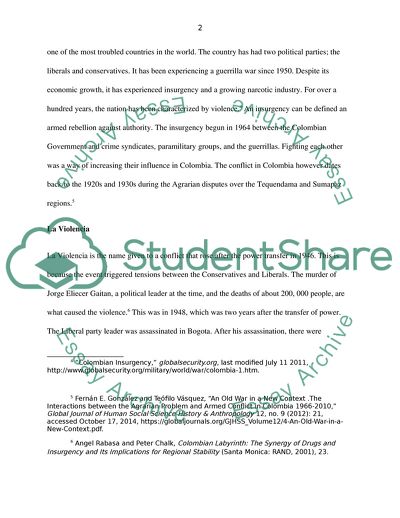Cite this document
(What Is the Religious/Social Catalyst behind the Insurgency in Colombia Essay Example | Topics and Well Written Essays - 4250 words, n.d.)
What Is the Religious/Social Catalyst behind the Insurgency in Colombia Essay Example | Topics and Well Written Essays - 4250 words. https://studentshare.org/social-science/1842103-what-is-the-religioussocial-catalyst-behind-the-insurgency-in-colombia-discuss
What Is the Religious/Social Catalyst behind the Insurgency in Colombia Essay Example | Topics and Well Written Essays - 4250 words. https://studentshare.org/social-science/1842103-what-is-the-religioussocial-catalyst-behind-the-insurgency-in-colombia-discuss
(What Is the Religious/Social Catalyst Behind the Insurgency in Colombia Essay Example | Topics and Well Written Essays - 4250 Words)
What Is the Religious/Social Catalyst Behind the Insurgency in Colombia Essay Example | Topics and Well Written Essays - 4250 Words. https://studentshare.org/social-science/1842103-what-is-the-religioussocial-catalyst-behind-the-insurgency-in-colombia-discuss.
What Is the Religious/Social Catalyst Behind the Insurgency in Colombia Essay Example | Topics and Well Written Essays - 4250 Words. https://studentshare.org/social-science/1842103-what-is-the-religioussocial-catalyst-behind-the-insurgency-in-colombia-discuss.
“What Is the Religious/Social Catalyst Behind the Insurgency in Colombia Essay Example | Topics and Well Written Essays - 4250 Words”. https://studentshare.org/social-science/1842103-what-is-the-religioussocial-catalyst-behind-the-insurgency-in-colombia-discuss.


